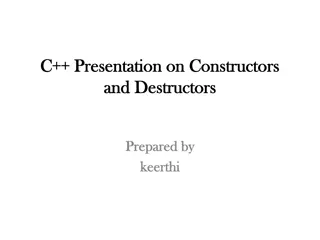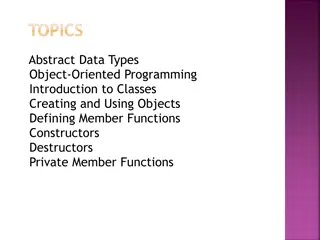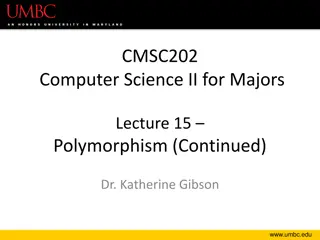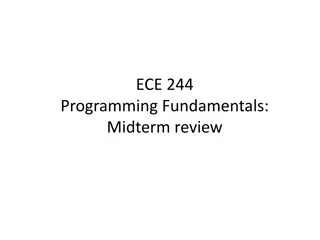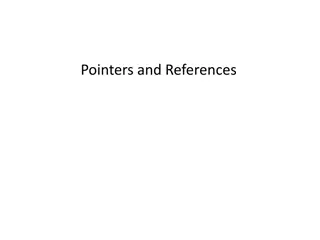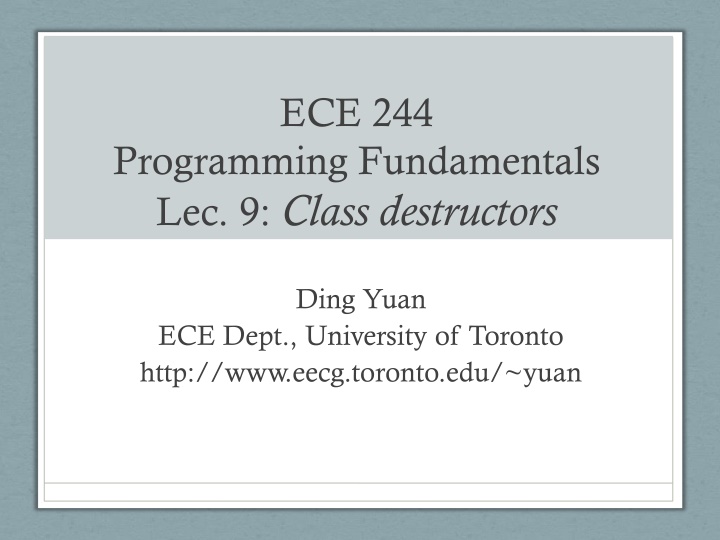
Class Destructors in C++
Learn about class destructors in C++, their purpose, and how they complement constructors. Explore examples and solutions to prevent memory leaks and manage object destruction efficiently.
Download Presentation

Please find below an Image/Link to download the presentation.
The content on the website is provided AS IS for your information and personal use only. It may not be sold, licensed, or shared on other websites without obtaining consent from the author. If you encounter any issues during the download, it is possible that the publisher has removed the file from their server.
You are allowed to download the files provided on this website for personal or commercial use, subject to the condition that they are used lawfully. All files are the property of their respective owners.
The content on the website is provided AS IS for your information and personal use only. It may not be sold, licensed, or shared on other websites without obtaining consent from the author.
E N D
Presentation Transcript
ECE 244 Programming Fundamentals Lec. 9: Class destructors Ding Yuan ECE Dept., University of Toronto http://www.eecg.toronto.edu/~yuan
Review: constructors Special member functions whose job is to initialize data in object Gets called automatically when object is instantiated Never called directly by any function
Destructors Complement of constructor Automatically called when an object is destroyed Not required to have a destructor (more on this later)
Example 1 class B { private: char *name; public: B(); B(char*); .. }; B::B (char *_name) { name = new char[100]; strcpy(name, _name); } B::B() { name = NULL; } Problem? If B is instantiated with: B b( John ); then a char array is dynamically allocated. When b is then destroyed, the allocated array remains on the heap, with nothing referencing it! Memory leak! name Memory: 5 J o h n addr. : 0 1 2 3 4 5 6 7 8 9
Fix: destructor! class B { private: char *name; public: B(); B(char*); ~B(); }; B::B (char *_name) { name = new char[100]; strcpy(name, _name); } B::~B() { if (name != NULL) delete [] name; } Destructor: `~ followed by class name Cannot take any parameter! Cannot return any type! Must be public If you used a new (or malloc) anywhere in your class, you likely need a destructor with a delete !
Example 2: Time // Time.h class Time { private: int minute; int second; public: Time(); .. .. }; // time.cc Time::Time() { second = minute = 0; cout << Time initialized << endl; } Do we need destructor? No! B/c you did not allocate memory dynamically!
Example 3: linked list 5 187 23 3 class List { private: Node *head; public: void insert (int d) { head=new Node (d, head); } ~List(){ if (head!=NULL) delete head; } } // main List *p = new List; p->insert(3); p->insert(23);.. delete p; class Node { private: int data; Node *next; public: Node(int d, Node *n) { data = d; next = n; } ~Node() { if (next != NULL) delete next; } }

